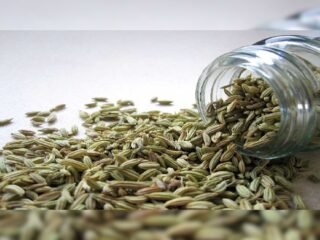White discharge or Vaginal discharge is a common and natural phenomenon in women. The cervix and vagina produce a fluid to maintain the hygiene and health. The consistency, colour, and odour of vaginal discharge might differ based on the menstrual cycle, hormonal fluctuations, sexual activity, and overall health. There are some herbs and supplements for white discharge that may help alleviate symptoms.
- Turmeric: Curcumin, a substance found in turmeric, has strong anti-inflammatory and antibacterial qualities. It might lessen reproductive tract inflammation and combat infections, which would lessen the symptoms of white discharge.
- Neem: Due to its antibacterial qualities, neem, often referred to as Indian lilac, has been utilized in traditional medicine. It contains substances that have been demonstrated to have antibacterial and antifungal properties, such as nimbin and nimbidin. External application of neem oil or supplements may help in the fight against infections that cause white discharge.
- Probiotics: Probiotics are live microorganisms that, when ingested, have the potential to improve health. It is thought that probiotic supplements containing Lactobacillus strains can aid in reestablishing the proper ratio of beneficial bacteria in the vagina. Maintaining this balance is essential to avoiding the proliferation of dangerous bacteria or yeast, which can cause symptoms including irritation, itching, and white discharge.
- Amla (Indian gooseberry): Amla, often known as the Indian gooseberry, is a great source of antioxidants and vitamin C. It can help in promoting vaginal health and has immune-boosting qualities, which may lessen the symptoms of white discharge.
- Tea Tree Oil: The antibacterial qualities of tea tree oil are widely recognized. Terpenes, which are present in it, have been demonstrated to have antifungal and antibacterial properties. But, because tea tree oil can irritate skin, it is important to carefully dilute it before using. To support prevent infections, it can be diluted and administered externally to the vaginal area or used in a sitz bath.
- Boric Acid: The natural treatment for yeast infections is boric acid, which possesses antifungal qualities. By stopping yeast cells from growing, it inhibits their proliferation. Under the supervision of a healthcare professional, one can utilize vaginal boric acid suppositories.
- Ginger: Ginger possesses antibacterial and anti-inflammatory qualities. Gingerol, an ingredient in it, has been shown to have antifungal and antibacterial properties. Adding ginger to your diet or drinking ginger tea may help reduce the symptoms of white discharge.
- Cranberry: The presence of proanthocyanidins in cranberries can inhibit bacteria from adhering to the urinary system walls, lowering the risk of urinary tract infections (UTIs). Cranberry pills or unsweetened cranberry juice may be helpful because UTIs can occasionally cause symptoms like white discharge.
- Fenugreek: Plant chemicals called phytoestrogens, which resemble the actions of oestrogen in the body, are abundant in fenugreek seeds. This could assist in controlling hormone levels, which would be advantageous in lessening the excessive white discharge brought on by hormonal abnormalities.
- Garlic: Allicin, a substance found in garlic, has inherent antibacterial qualities. It has been traditionally used because it has antimicrobial properties. White discharge can be caused by bacterial overgrowth in the vagina or yeast infections, both of which can be treated with raw garlic or garlic supplements.
White discharge symptoms may be eased by using these herbs and supplements, but it is important to speak with a doctor before using them, particularly if you have underlying medical issues or are pregnant or nursing.








